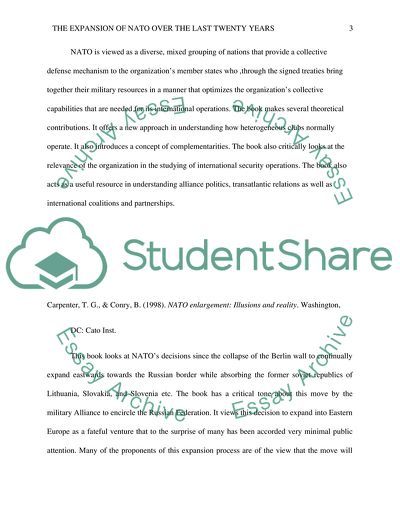Cite this document
(The Expansion of NATO Over Past Decades Annotated Bibliography Example | Topics and Well Written Essays - 2500 words, n.d.)
The Expansion of NATO Over Past Decades Annotated Bibliography Example | Topics and Well Written Essays - 2500 words. https://studentshare.org/politics/1822804-the-expansion-of-nato-over-the-last-twenty-years
The Expansion of NATO Over Past Decades Annotated Bibliography Example | Topics and Well Written Essays - 2500 words. https://studentshare.org/politics/1822804-the-expansion-of-nato-over-the-last-twenty-years
(The Expansion of NATO Over Past Decades Annotated Bibliography Example | Topics and Well Written Essays - 2500 Words)
The Expansion of NATO Over Past Decades Annotated Bibliography Example | Topics and Well Written Essays - 2500 Words. https://studentshare.org/politics/1822804-the-expansion-of-nato-over-the-last-twenty-years.
The Expansion of NATO Over Past Decades Annotated Bibliography Example | Topics and Well Written Essays - 2500 Words. https://studentshare.org/politics/1822804-the-expansion-of-nato-over-the-last-twenty-years.
“The Expansion of NATO Over Past Decades Annotated Bibliography Example | Topics and Well Written Essays - 2500 Words”. https://studentshare.org/politics/1822804-the-expansion-of-nato-over-the-last-twenty-years.


